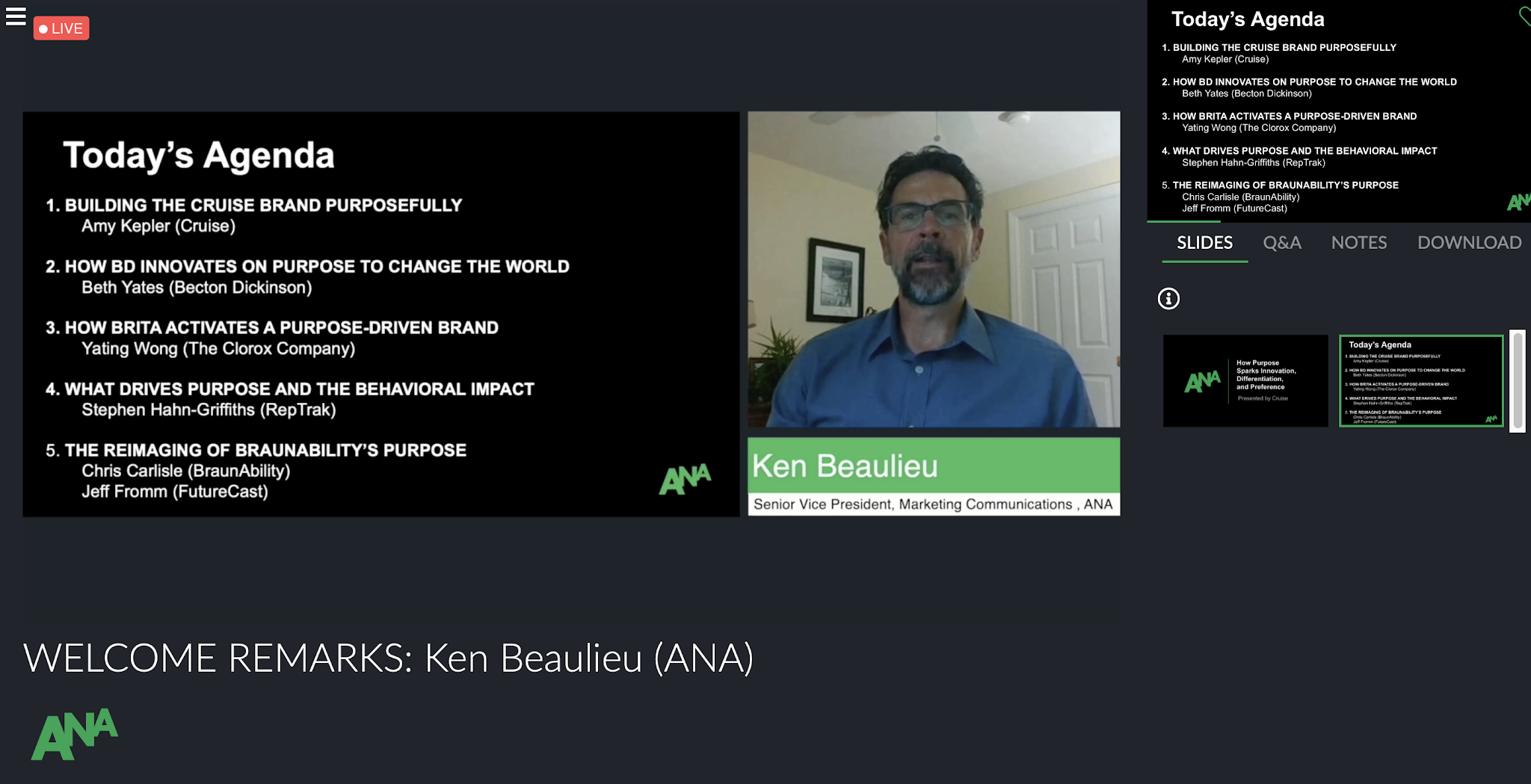AdWeek's Mediaweek | Jody Karg
Mediaweek, a conference by AdWeek, presents the opportunity for marketing and communications professionals to hear from the industry’s leading brand marketers and ad buyers on mar tech and ad tech best practices. Despite my focus being on public relations, this seemed like an opportunity to expand my integrated communications knowledge and learn more about advertising, marketing, and media buying.
One change noted was that Walmart customers now will have a different experience walking into a Walmart than they did before the pandemic. Saleel said,
“The pandemic forced us to think differently about how we serve customers… Our stores will continue to be critically important. We are transforming our stores based on how our customers are today, with their head in their phones.”
For example, using the Walmart app, customers can access information in the store, scan prices, or even place orders for pickup or delivery. Saleel said that engaging in the store and outside the store, like on social media or via the app, especially in rural America where Walmart is a big part of their community, is important. He stated that,
“We will continue to engage with our customers through our stores.”Saleel also touched upon Walmart’s customer centric approach. As the largest omnichannel retailer, he noted that,
“It starts with knowing your customers and who is engaging, and who has not engaged in a while. Once you know that you can show meaningful ways that you can serve them.”This conversation revealed that companies need to be constantly evaluating how they interact with consumers and whether they are updating their strategies to meet expectations. It also revealed that in person interactions with consumers in stores and digital interactions on social media and on apps are both of critical importance in creating brand loyalty. To be successful, the focus must be on the consumer and on providing the most seamless experience possible.
During “Thinking Outside the Ring: From Analytics to Action”, Tsvetan Tsvetkov, Senior Vice President of Plan/Optimize at Nielsen and Sid Raisoni, Vice President of Analytics at WWE spoke with Lisa Granatstein, Chief Content Officer at AdWeek. During this talk, they explored the different media tactics they used due to the pandemic and how they analyzed the results. Specifically, they focused on how WWE had to transform WrestleMania 36, the company’s largest event of their year. During the beginning of the pandemic in March 2020, the team had to switch up the plan and find a way to still engage with fans and meet expectations. Unsurprisingly, Sid mentioned that,
“A large chunk of our paid media budget is spent on that event [Wrestlemania],” and, “Ensuring the effectiveness of the budget to gain subscribers was the main priority.”In regards to changing up the strategy, Sid mentioned that, “Gut and business context and intuition plays a role along with the math,” in regards to using analytics to make media decisions.” He worked with Nielson to leverage data to drive their decision making. By combining intuition along with the data from Nielson, he also stated that,
“The event saw a record 1.1B video views marking a 14% increase YOY. Our content also 100% increase in engagement on social media. While the business model has changed, our core approach is still fan centric and data driven. We continue to be focused on the fan and use data in the fast moving media landscape.”
Despite the changes to WrestleMania 36, the company still experienced success.
Reflecting on the data they analyzed at Nielson, Tsvetan noted that,
“With the increase in streaming that was an obvious impact behavior we saw. That behavior required some adjustments. We also had to look at where the marginal impact of these channels is. Streaming would be a good example of that… With the rise of connected TV and usage, that was an area that we really had to explore with some clients.”
Similarly, in a different panel discussion on “The Future of Connected TV Is Precision Marketing”, Brian Norris, SVP of direct to scale at NBCUniversal, said that,
“Everybody knows that connected TV is only going to grow.”
This seems to be a trend that many companies are identifying and leveraging in their strategies.
This conversation revealed the importance of data and how it can impact business decisions. But it was also noted that sometimes data isn’t always correct, or might not lead you in the right direction. Data helps to identify the important social trends or audience feelings that you need to be aware of when making marketing strategies, but the data also needs to be analyzed closely to ensure it is providing valuable insights.
Another topic I found interesting was on cookies and people being tracked online. Several speakers noted that consumers don’t like being tracked, but many companies still do it since it provides valuable information. Saleel Sathe noted that,
“Of those people that don’t want personalized content, it is because they don’t want to be tracked online.”
This is interesting because the best way to get interest is to target consumers with personalized content. This means that there can be a disconnect between consumers wanting relevant ads but not wanting their information used for this purpose. Additionally, Dave Gaines, CEO and cofounder of Media by Mother, said,
"Cookies made everyone lazy. Money is thrown into the internet and we allow a piece of code to tell us where it should go,"said Dave Gaines, co-founder and CEO of Media by Mother.
Overall, this conference explained many different aspects of marketing and the media landscape. It explained that the best way to get through to your customers is with personalized content and by leveraging data to stay on top of trends. And as the media landscape gets more complex, with journalists becoming less responsive during the pandemic due to layoffs, and the digital world becoming more complex, and companies competing for key media spots, building strong, thoughtful stories to drive conversion is more important than ever.





